Romanov Archives - Expenses of Alexandra
From the Romanov Archive
Alexandra was responsible for her own expenses, those of her children and the general running of the Tsar's 'home'. The everyday costs of servants, food, the maintenance of the places and furnishings were managed apart from the Tsarina's 'personal expenses' which these amounts cover.
It is said that the Tsarina was extremely careful about money and watched all of her expenses. This was true of her husband as well, but the roots of Alexandra's frugality were different than her husband's which were based on principal and habit rather than experience. Where the Tsar had always existed in something of a fairy tale world where the relative costs of real things were a more than a bit of a mystery, Alexandra's Hessian family had been poor as Royals go and lived from year-to-year on a tight budget, relying on Grandmother Queen Victoria for financial support. As a young woman Alexandra had never had much money of her own and was dependant on annual hand-outs from relatives to cover her living expenses. Had these funds run out she had no where to go except to beg from relatives and this was an intolerable situation for her that became increasing more acute as she grew older. Her financial situation reached a psychological breaking point when her brother the Grand Duke of Hesse married Victoria Melita, the spoiled and self-centered daughter of a Russian Grand Duchess and the English Duke of Edinburgh. Henceforth her annual allowance became under the control of her brother's wife, a humiliation and insult the proud Alexandra resented.
When she married the Tsar of Russia things changed dramatically for Alexandra. She suddenly had control over vast sums of money for her personal expenses, but this had little effect on her habits of spending. At first the new Tsarina was completely blown away by the resources under her control, but she observed these purchases silently and allowed the Court officials, her husband and her new mother-in- law, the Dowager Empress to make fabulous purchases for her new rooms and wardrobe. In time the Tsarina came to exert more and more control over her accounts, until she was the sole mistress of her personal finances. Once she Alexandra had the reigns she treated each ruble as if it might be the last one, carefully watching her expenses and always trying to make her budget go further then her advisors though possible and appropriate to a Russian Empress.
While she was frugal to the point of obsession, at the same time Alexandra zealously made preparations for the dark 'rainy day' that could come at any time. From the beginning, and increasingly as the political situation deteriorated, Alexandra made a point of secretly creating much of her private wealth in that most portable of valuables - jewelry.
Alexandra's personal collection of jewelry, precious stones and objects was probably the most valuable of its day - amounting to over $50 million dollars in 1917 currency. Not willing to let her family's future recourses out from under her watchful eye - or far from her reach, she kept this collection close at hand - in her bedroom. Ever-prepared and the resourceful manager, it can be assumed that Alexandra had a well-worked out plan for the concealment and transportation of her jewelry in case of need.
The shakiness of the Russian throne was always apparent to everyone, although these fears were masked by Nickolas and Alexandra's under a carefully assembled and emotionally sapping veneer of placid optimism about Russia's future and a Christian submission to the God who had placed the Russian crown upon their heads.
Alexandra's jewelry was composed almost entirely of family gifts. She bought almost nothing for herself; such purchases weren't necessary. Each year she received dozens of gifts of jewelry on birthdays, anniversaries, Christmas and other important dates until her collection totalled several hundred items which were carried about in massive hardwood cases wherever the family travelled. The most valuable pieces came from her husband, who loved to see his wife splendidly dressed and bejewelled in the Russian tradition.
Unlike many Russian aristocratic women who habitually displayed their jewelry in special wood and glass cases to show off their wealth and taste, Alexandra kept her jewelry out of the public eye and it was almost entirely unknown to the public. At the time of revolution the Provisional Government had no concept of the value of the Tsarina's collection in the Alexander Palace. Sometime, soon after the fall of the dynasty, the Government asked her to turn over her valuables for 'safekeeping' to the authorities. In response to this request she complied by handing over her bulky pieces - such as her c collection Fabergé eggs, since these well-known by the public, were not easily transported and of little real covertable value in the short-term. With characteristic stubbornness the Empress categorically refused to turn over or account for any of her personal jewels to the Provisional Government. Since Kerensky, a man with bigger problems on his hands than stealing diamonds from an ex-Tsarina and her daughters, was unwilling to strip search the Imperial family and ransack their rooms in search of valuables, Alexandra's collection remained intact and most of it secretly followed the family into exile. It's subsequent fate is well-known and the Soviet Government ended up with the vast bulk of it - collected off of the bloody bodies of the Empress and her daughters after their murder.
Although the Tsarina's jewelry is a subject of great interest, her other expenses related to dress, toiletries and personal items - when combined with her personal charitable grants and purchase of art - tell much about Alexandra as a woman, a mother, a collector and an Empress.
Unfortunately for scholars wishing to study the Tsarina's accounts, bills and receipts, her files are now incomplete. Large chunks of files are missing from Alexandra's records. It may be that Stalin had them removed in the 1930's in search of a full accounting of those of her jewels which still might be missing and which he lusted after. Stalin had good reason to conduct his search. In the 1930's a fabulous collection of Alexandra's gems were discovered concealed in Tobolsk, where they had arrived in a vain effort to hide them years after the Empress had placed them for safekeeping with the trusted Mother Superior of a nearby convent. This discovery of jewels triggered a vast investigation in which all surviving witnesses to the exile of the Romanovs in Russia were ferreted out and interrogated by the Secret Police. Former servants, guards and their relatives were grilled for any and every detail of the last days of the Romanovs in hopes that they might disclose clues that would lead to more of Alexandra's hidden treasures. Many of these former associates of the family, who had survived the Red Terror for years in the obscurity of menial factory jobs in remote parts of the country, lost their lives after information was extracted from them. It may be, as a part of this investigation, Alexandra's expense records were removed from the archives to reconstruct and account for all of her jewelry. In any case, today these files are frustratingly incomplete in comparison with those of her husband and children. Still, it is possible, especially through the careful records of the Empress's assistant, Madame Gheringer, to read accounts of things relating to the Empress that were received at the palaces by her staff and thus gain an understanding of their number and value. The following are just a few examples from Madame Gheringer's files:
Fund 625. THE LETTER OF VISHNYAKOVA M.I. TO KAMMER FRAU GHERINGERThe First World War had a significant effect on the Tsarina's expenses and this is reflected in her expenses listed below. It has been said that she gave up her own dress allowance, and that of her daughters, to charity during the war, but this cannot be strictly true as the files still show considerable expenses for clothing during this period. It seems that when the initial euphoria over a fast and successful conclusion of the war sunk in the practical considerations of day-to-day life and growing children neccesitated a more realistic attitude toward normal costs such as clothes and purchased proceeded at a careful pace."Gheringer M.F.WRITTEN ON SEPTEMBER 7, 1909 FROM LIVADIA. M.F.", doc.243.
"...Will you, please, inform the Office that the desk set for which I signed belongs to Grand Duke Mikhail Alexandrovich. It was placed in the heir's room by mistake. I think, now it is with Grand Duke Mikhail Alexandrovich..."
625,p.6, May 6/19, 1903
Nickolas II gave Alexandra Fyodorovna a diamond bracelet with pink topazes as a present.Ts.S.p.8,Apr 23/ May 6
On Alexandra Fyodorovna's name-day Nickolas II gave her as presents: a cross of 11 big diamonds (that was made of Bokhara piece of jewelry), a big brooch with 5 big and 9 small aquamarines, a comb "Galique" with 3 big and small diamonds. A silver chain with 12 balls made of different precious stones was a present from Grand Duchess Yelizaveta Fyodorovna..."p.11.
> For Christmas of 1902 in Tsarskoe Selo the Emperor gave Alexandra Fyodorovna a diadem of small diamonds and 5 cut pink topazes as a present.. Maria Fyodorovna gave her clasps of small diamonds, two chalcedons and 6 small pearls. Grand Duke Sergey Alexandrovich presented her with a brooch made of white mosaics.pp.13,14.
For Christmas of 1903 in Tsarskoe Selo Alexandra Fyodorovna was presented with the following pieces of jewelry:
Star of white enamel with a heart in the middle of it and 8...(?) in it from Duke of Hesse in memory of Princess Elizabeth of Hesse.
Bracelet of 9 sapphires "sternsapphire" with small diamonds from Empress Maria Fyodorovna.
Flowers of platinum with 2 cut sapphires at the ends and a ring with a mauve pearl and 8 small diamonds from Nickolas II....p.19.
On Alexandra Fyodorovna's name day on May 26/June 8 1909 she got the following pieces of jewelry: Pendant with 2 diamonds from Grand Duchess Yelizaveta Fyodorovna.
Gold bracelet with 3 ship lamps from Henry of Prussia....
For Christmas of 1909 she got a brooch of 6 cut sapphires from Grand Duchess Yelizaveta Fyodorovna, a pin "Lily of the Valley" of one pearl and 3 small diamonds from Grand Duchess Maria Pavlovna and 6 blue and grey enamel buttons from William of Sweden....
This information is for educational purposes only and should not be reproduced or used in any commercial fashion without prior written approval. If you find this list or other parts of the website valuable we ask you to consider making a donation to the APA for the preservation of the Palace archives in St. Petersburg or the Romanov archive in Moscow.
These entries were translated by Jsenya Dyakova.
Alexandra's Personal Accounts
| Year | 1914 | 1915 | 1916 |
| Credit | 266506.44 | 227612.93 | 231959.77 |
| Debit | 266506.44 | 227612.93 | 231959.77 |
| Personal Expenses | 6000.00 | 6000.00 | 6000.00 |
| Gifts | 61405.51 | 30466.00 | 27059.26 |
| Toilet and Wardrobe | 40000.00 | 40000.00 | 40000.00 |
| Pensions | 1303.89 | 1025.01 | 1200.01 |
| Family Allowances | 15338.20 | 14892.27 | 14842.95 |
| Donations | 44256.09 | 23098.49 | 12047.45 |
| Different Grants | 31716.50 | 36763.84 | 25237.50 |
| Premiums | 3396.40 | 2498.00 | 2331.08 |
| Chamber Expenses | 1746.53 | 23098.49 | 3191.73 |
| Salaries and Additional Payments | 522.76 | 696.66 | 629.98 |
| Pictures and Library | 2776.98 | 151.80 | 2348.34 |
| Other Expenses | 7969.27 | 9615.03 | 16548.27 |
| Extraordinary Expenses | 50074.93 | 60012.10 | 78588.55 |
| Transferred to the Economic Sum | 1937.65 | - | - |
Please send your comments on this page and the Time Machine to boba@pallasweb.com
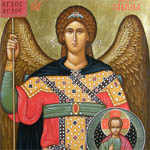
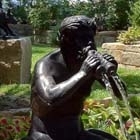



 Imperial Bedroom
Imperial Bedroom Portrait Hall
Portrait Hall Mauve Room
Mauve Room Maple Room
Maple Room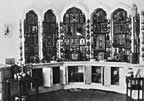 Aleksey's Bedroom
Aleksey's Bedroom Nicholas's Study
Nicholas's Study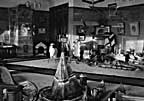 Aleksey's Playroom
Aleksey's Playroom Formal Reception
Formal Reception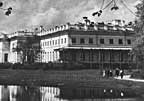 Balcony View
Balcony View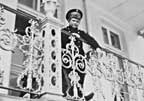 Aleksey- Balcony
Aleksey- Balcony Children-Mauve
Children-Mauve Nicholas's Bathroom
Nicholas's Bathroom Alexandra- Mauve
Alexandra- Mauve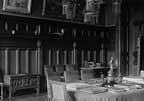 Nicholas's Reception
Nicholas's Reception Tsarskoe Selo Map
Tsarskoe Selo Map